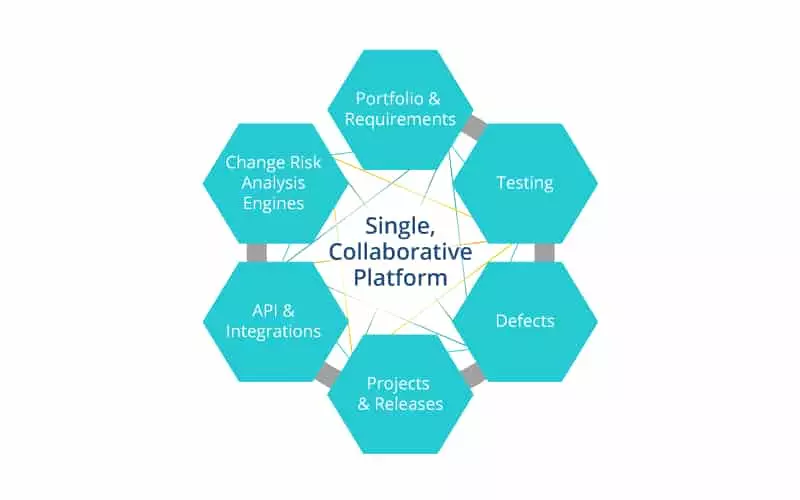Table of Content
In a world where digital transformation is a reality, software has become a strategic asset to every enterprise. The implication is the software delivery process can be an important source of competitive differentiation for companies in almost any industry, and many firms are embracing the concepts of Continuous Integration & Continuous Delivery (CI/CD).
A key critical challenge with CI/CD is the coordination of releases across multiple software delivery pipelines. Organizations need a solution to help manage, visualize and measure the business value of the demand streams within the pipelines. This solution is Value Stream Management [VSM], defined by Forrester as tools that “aggregate data from multiple software delivery pipelines to provide visibility that an application release (composed of many components) will deliver the value expected of it.*”
Forrester’s latest report, Elevate Agile-Plus-DevOps With Value Stream Management goes into greater depth as to the importance of VSM to experience greater efficiencies and further optimization possibilities for each software product in their delivery pipeline. The report dives into the different perspectives of VSM and the different vendor solutions, highlighting Panaya’s own Release Dynamix for Enterprise Agile Delivery.
At its core, VSM is about linking economic value to technical outcomes. Value Stream Management solutions must “provide visibility into the state of a business capability, a user or customer outcome, an epic, a user story, or a work item across a set of delivery pipelines, spanning from idea to realization in production.*”
Value Stream Management in the Enterprise
Both large enterprises and professional software development organizations (ISVs) share many requirements in this regard. However, there are some important ways in which the needs of enterprises differ in terms of working with value stream management:
- Business vs. R&D Centricity: Delivery at ISVs is driven by R&D and product management. Feed-back from customers is consolidated and filtered via the product owner. Within enterprises, project budget and delivery accountability are increasingly moving to the line of business. At large enterprises, it is the customer who owns the value stream.
- Organizational Complexity: Within ISVs there is often a 1:1 relationship between value streams and delivery teams. Within enterprises, R&D teams are often siloed within specific domains, such as “CRM” or “SAP”. As a result, single teams can be part of multiple value streams, with domain specialization making it difficult to move across platforms and to form cross-functional teams. Furthermore, product owners residing within a line of business or functional domain (i.e. “Marketing Applications”) can often be responsible for portfolios that encompass a wide range of value streams and projects. This complexity makes the task of planning, budgeting, and tracking Value Streams significantly more challenging within the enterprise.
- Product Owner Sophistication: Conversely, product owners and release managers within enterprises often lack the experience, mindset and practices of their counterparts within ISVs.
- Aversion to risk: Within enterprises, development often impacts running processes– therefore the downside associated with regressions in production is high.
- Legacy: Enterprise development usually requires integration with incumbent systems that were not built or customized using Agile and Dev Ops principles, therefore, the ability to assess risk and impact is relatively low at enterprises vs. ISVs.
Overcoming the Challenge with Enterprise Agile Delivery Solutions
In order to gain the value from VSM, enterprises must find a solution that differentiates between their needs and ISVs. An Enterprise Agile Delivery solution understands that large organizations are more siloed, are often still working in waterfall or a more hybrid water-agile-fall mode and have many users that are not as technically driven as within an ISV.
Panaya Release Dynamix meets these needs with the ability to manage and monitor investment buckets that strategically align demand streams with your overall business strategy, ensuring you gain the greatest value for your spend. All stakeholders have visibility into overall projects, features and requirements that are mapped back to the value provided.
With Release Dynamix you see everything, with visibility into the entire delivery toolchain with real-time monitoring and reporting. With demand streams in one place, complete visibility and traceability into assigned projects and scheduled releases, cross-functional teams can intelligently dispatch requirements backlogs to multiple projects and releases. The collaborative platform helps you sync everyone across business, testing, development and delivery teams with connected activities and workflows that focus on the same objective. And unique to RDx, you can factor in real-time insights and gain multidimensional views into impact and risk for data-based decision making. Altogether, this new standard lets you release quickly, more frequently and without disruption, ensuring the continual release of value to your customers.
*TechRadar™: Continuous Software Delivery, Q3 2016


